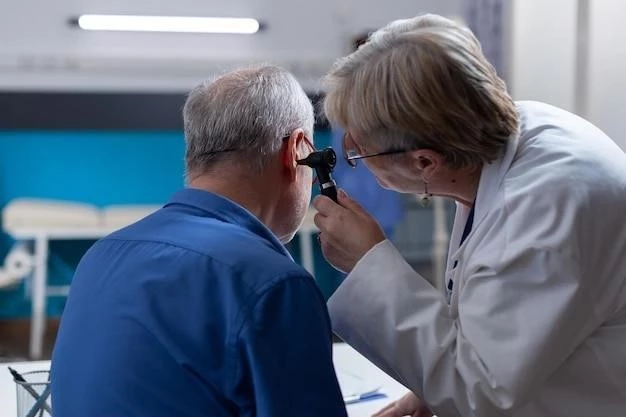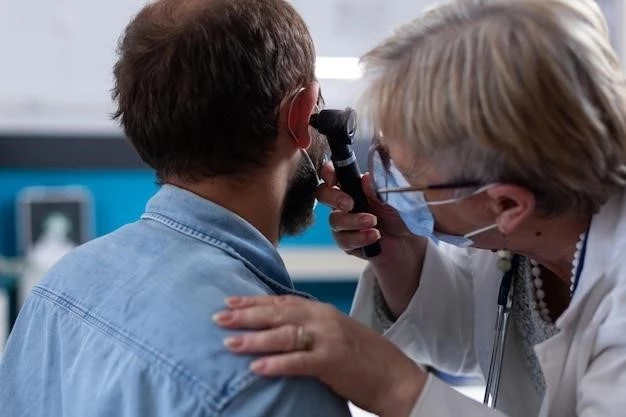Overview of Otosclerosis
Otosclerosis (oto, of the ear, and sclerosis, abnormal hardening of body tissue), also known as otospongiosis, is an abnormal bone remodeling in the middle ear․ The normal dense endochondral layer of the bony otic capsule in the labyrinth is replaced by irregularly laid spongy bone leading to the fixation of the stapes․
Definition and Background
Otosclerosis, derived from Greek, refers to the abnormal hardening of body tissue in the ear․ This condition involves an overgrowth of bone in the middle ear, particularly affecting the stapes, one of the smallest bones in the human body․ It leads to conductive hearing loss as the bone’s abnormal growth restricts proper sound transmission, hindering the hearing process․ Although the exact cause of otosclerosis is not fully understood, it is believed to involve a complex interplay of genetic, environmental, and hormonal factors․
Causes and Risk Factors
The exact cause of Otosclerosis is not fully understood, but it is believed to involve a complex interplay of genetic, environmental, and hormonal factors․
Genetic Component
Otosclerosis, a condition affecting the bones of the middle ear, has a recognized genetic component, particularly impacting Caucasians of European descent, with a higher prevalence in white women․ Studies suggest a complex interaction of genetic, environmental, and hormonal factors contributing to the development of otosclerosis․
Environmental Factors
The etiology of Otosclerosis is believed to involve not only genetic factors but also environmental influences․ While the exact environmental factors contributing to the development of otosclerosis are not fully elucidated, research suggests a potential relationship between certain viral infections, low fluoride levels, and the onset of the condition․
Symptoms and Clinical Presentation
Otosclerosis commonly presents as conductive deafness, affecting the bones in the middle ear and interfering with sound transmission, leading to hearing loss, tinnitus, dizziness, and balance issues․
Hearing Loss
Otosclerosis commonly causes conductive deafness by interfering with sound transmission through the ear, leading to gradual hearing loss․ This abnormal bone growth affects the stapes bone, impacting the transmission of sound waves to the inner ear, resulting in diminished hearing ability․
Tinnitus and Balance Issues
Otosclerosis can manifest with symptoms beyond hearing loss, including tinnitus (ringing in the ears) and balance issues․ These additional symptoms can significantly impact the quality of life for individuals affected by the condition, contributing to a range of sensory disturbances related to the inner ear’s function․

Diagnosis and Testing
Diagnosing Otosclerosis often involves a comprehensive review of medical history, physical examination, hearing tests, and imaging studies to assess the condition of the middle ear and its impact on hearing function․
Medical History and Physical Examination
Diagnosing Otosclerosis involves a thorough review of the patient’s medical history and a detailed physical examination․ Healthcare providers will assess symptoms, risk factors, and family history to gain insight into the potential presence of otosclerosis․ Additionally, a physical examination may include evaluating the structures of the ear to identify any signs indicative of otosclerosis․
Hearing Tests and Imaging Studies
To diagnose Otosclerosis, healthcare providers often conduct various hearing tests, such as pure-tone audiometry and tympanometry, to assess hearing abilities and middle ear function․ Imaging studies like CT scans or MRI scans may also be recommended to visualize the structures of the ear and confirm the presence of abnormal bone growth․
Treatment Options
Options for treating Otosclerosis include hearing aids or stapedectomy surgery to address hearing loss and improve sound transmission in the affected ear․
Hearing Aids
Hearing aids are commonly used to manage hearing loss associated with Otosclerosis․ These devices can help individuals hear better by amplifying sounds and compensating for the impaired transmission of sound through the middle ear affected by the condition․ Hearing aids are a non-invasive and effective treatment option for improving hearing ability in individuals with Otosclerosis․
Stapedectomy Surgery
In cases of Otosclerosis where hearing aids are insufficient, stapedectomy surgery may be recommended․ This surgical procedure involves replacing the fixed stapes bone with a prosthetic device to restore sound conduction in the ear․ Stapedectomy can often improve hearing outcomes, particularly for individuals with significant conductive hearing loss due to Otosclerosis․

Research and Future Directions
Research into Otosclerosis aims to unravel the complex interplay of genetic, environmental, and hormonal factors contributing to the abnormal bone growth in the middle ear․ Future directions in the field involve exploring novel treatment modalities, refining surgical techniques like stapedectomy, and enhancing diagnostic tools to improve outcomes for individuals affected by Otosclerosis․
